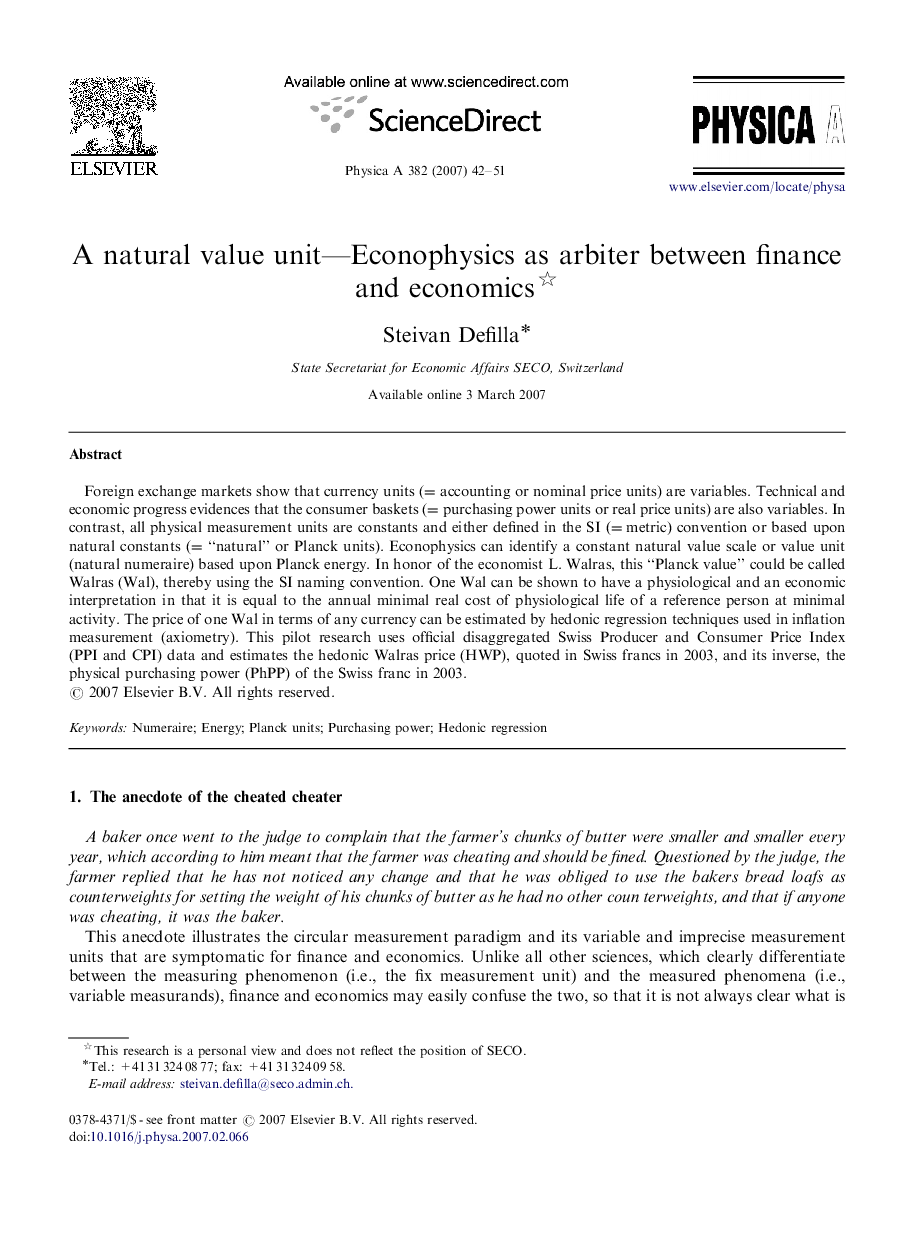| Article ID | Journal | Published Year | Pages | File Type |
|---|---|---|---|---|
| 979575 | Physica A: Statistical Mechanics and its Applications | 2007 | 10 Pages |
Abstract
Foreign exchange markets show that currency units (= accounting or nominal price units) are variables. Technical and economic progress evidences that the consumer baskets (= purchasing power units or real price units) are also variables. In contrast, all physical measurement units are constants and either defined in the SI (=metric) convention or based upon natural constants (= “natural” or Planck units). Econophysics can identify a constant natural value scale or value unit (natural numeraire) based upon Planck energy. In honor of the economist L. Walras, this “Planck value” could be called Walras (Wal), thereby using the SI naming convention. One Wal can be shown to have a physiological and an economic interpretation in that it is equal to the annual minimal real cost of physiological life of a reference person at minimal activity. The price of one Wal in terms of any currency can be estimated by hedonic regression techniques used in inflation measurement (axiometry). This pilot research uses official disaggregated Swiss Producer and Consumer Price Index (PPI and CPI) data and estimates the hedonic Walras price (HWP), quoted in Swiss francs in 2003, and its inverse, the physical purchasing power (PhPP) of the Swiss franc in 2003.
Related Topics
Physical Sciences and Engineering
Mathematics
Mathematical Physics
Authors
Steivan Defilla,
